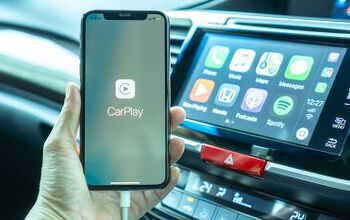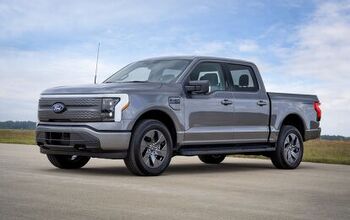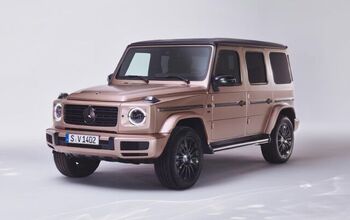Cash for Clunkers: The Environmental Cost of a New Car
The short answer: 31,362 Btus per pound. That’s the average energy cost for constructing a modern motor vehicle —rubber, fluids, glass, metal and battery. Can that number tell you if it’s better, environmentally speaking, to keep your ’85 Renault Fuego or pick up a Honda Insight? That’s a longer answer full of scary science and scarier math. The U.S. Department of Energy’s Argonne National Lab has attempted to analyze the energy consumed manufacturing vehicles. Their creation is called Greenhouse gases, Regulated Emissions and Energy use in Transportation models. GREET. No really.
Argonne broke automobiles down to discrete parts, then measured the energy required to mine, make and move those parts. They assess in British thermal units, the amount of energy needed to raise the temperature of one pound of water one degree Fahrenheit.
Applying the GREET model, it takes 100.391 million Btus to make a 3,201-pound vehicle. Not all cars are created equal, but the model accounts for the differences. For instance, the batteries in a hybrid render a different formula. According to GREET, a Prius comes in at 38,650 Btus per pound. A 2009 BMW M3, with its light carbon fiber roof screws things up. Just ignore it. For the 90 percent of the vehicles on the road, it’s 31,362 Btus per pound.
So, a 1996 Mitsubishi Montero weighing in at 4,290 pounds used 135,542,980 Btus for construction. Which is much too cumbersome and abstract a number. Put a more digestible way, it took 1,850 gallons of gasoline to make the Montero. (113,500 Btus in a gallon of gas.)
A 1996 Montero is rated at about 14 mpg. If my intention is to be kind to the planet and send this beast off to the scrap yard, perhaps I’d consider a 2010 Outlander. (A legitimate, C.A.R.S. sanctioned transaction worth $4,500.) The engine is smaller, but mileage jumps to 22 combined. Cool. Because in my old Montero, I’m driving 12,000 miles a year, using 857 gallons of gas annually. In my new Outlander, I’ll only be using 545. Saving 313 gallons of fuel a year, three years from now the energy cost of building the new car will be erased and I really will be reducing my carbon footprint.
That was an easy one. Now lets say you still have the 1996 Honda Civic you bought when you graduated. It weighs in at 2,303 pounds and gets about 31 mpg. It took 636 gallons of gas to build this car, which uses 387 gallons per year (figuring 12,000 miles annually.)
A 2009 Honda Civic is 300 pounds heavier and gets a combined 29 mpg. This car took 715 gallons of gas to create and consumes 413 gallons of gas a year. It won’t ever be better for the environment than your ’96. The government’s cash for clunker’s program would not offer you any incentive to make this deal. Their web site is actually quite good at comparing vehicles and wringing the best it can out of a transaction. In terms of carbon dioxide, anyway. When it comes to environmental costs, miles per gallon is not the whole story.
GREET tracks other car-born noxious fumes in addition to CO2: Methane and nitrous oxide are two other green house offenders. Volatile organic compounds, carbon monoxide, nitrogen oxide, particulate matter with size smaller than 10 micron particulate matter with size smaller than 2.5 micron and sulfur oxides are pollutants that don’t necessarily make the planet hotter. They don’t make us live longer and feel better either.
A number of new vehicles on the road are considered partial, ultra or super low emissions vehicles because they spew out considerably less pollution, though not necessarily through stellar gas mileage. They absorb evaporating fuel, prevent leaks and don better catalytic converters to clear out a lot of the stuff mentioned above. They’re good for the air, just not the carbon content.
There are reasons to buy a new car other than environmental friendliness. New cars are, in general, much safer than those than came before them. Air bags, anti-lock brakes, crumple zones and child seat hooks add up to an improvement to your personal environment should you hit a patch of black ice, followed by a guardrail. New cars also spend less time in the shop than their 16-year-old counterparts. (Most, anyway.) And, just as it took energy to make original parts, replacement parts don’t pop out of thin air either.
Ultimately, deciding on a new car vs. holding on to old one needs to be case by case. A bromide like “the best car for the environment is the one you already have” is too broad to be true. Good natives of Earth will need to find a few numbers, multiply and divide, and then choose between the spanking new and the trusty old.
More by Michael Martineck
Latest Car Reviews
Read moreLatest Product Reviews
Read moreRecent Comments
- 3-On-The-Tree My 2009 C6 corvette in black looks great when it’s all washed and waxed but after driving down my 1.3 mile long dirt road it’s a dust magnet. I like white because dust doesn’t how up easily. Both my current 2021 Tundra and previous 2014 Ford F-150 3.5L Ecobomb are white
- Bd2 Would be sweet on a Telluride.
- Luke42 When will they release a Gladiator 4xe?I don’t care what color it is, but I do care about being able to plug it in.
- Bd2 As I have posited here numerous times; the Hyundai Pony Coupe of 1974 was the most influential sports and, later on, supercar template. This Toyota is a prime example of Hyundai's primal influence upon the design industry. Just look at the years, 1976 > 1974, so the numbers bear Hyundai out and this Toyota is the copy.
- MaintenanceCosts Two of my four cars currently have tires that have remaining tread life but 2017 date codes. Time for a tire-stravaganza pretty soon.


































Comments
Join the conversation
You may want to brush up on your history. A variety of coinage types and paper money were used, including significant silver, and bronze money not since the imperial system established a few thousand year ago. - The "growth" were not caused by forging bronze coins or printing paper money. It's a result of human invention and entrepreneurship. China has remained mostly an agrarian society until quite recently with the introduction of modern banking and money from overseas' modern banks. Do you own a house? Did you pay for it all cash money from your years of saving up inventiveness and entrepreneurship? Or did the bank loan you almost all of it based on nothing but a promise to repay and your earning "potential", thus also stimulating productivity for everyone involved in building that house, all based on nothing but an accounting trick? That bootstrap process is the seed of modern growth.